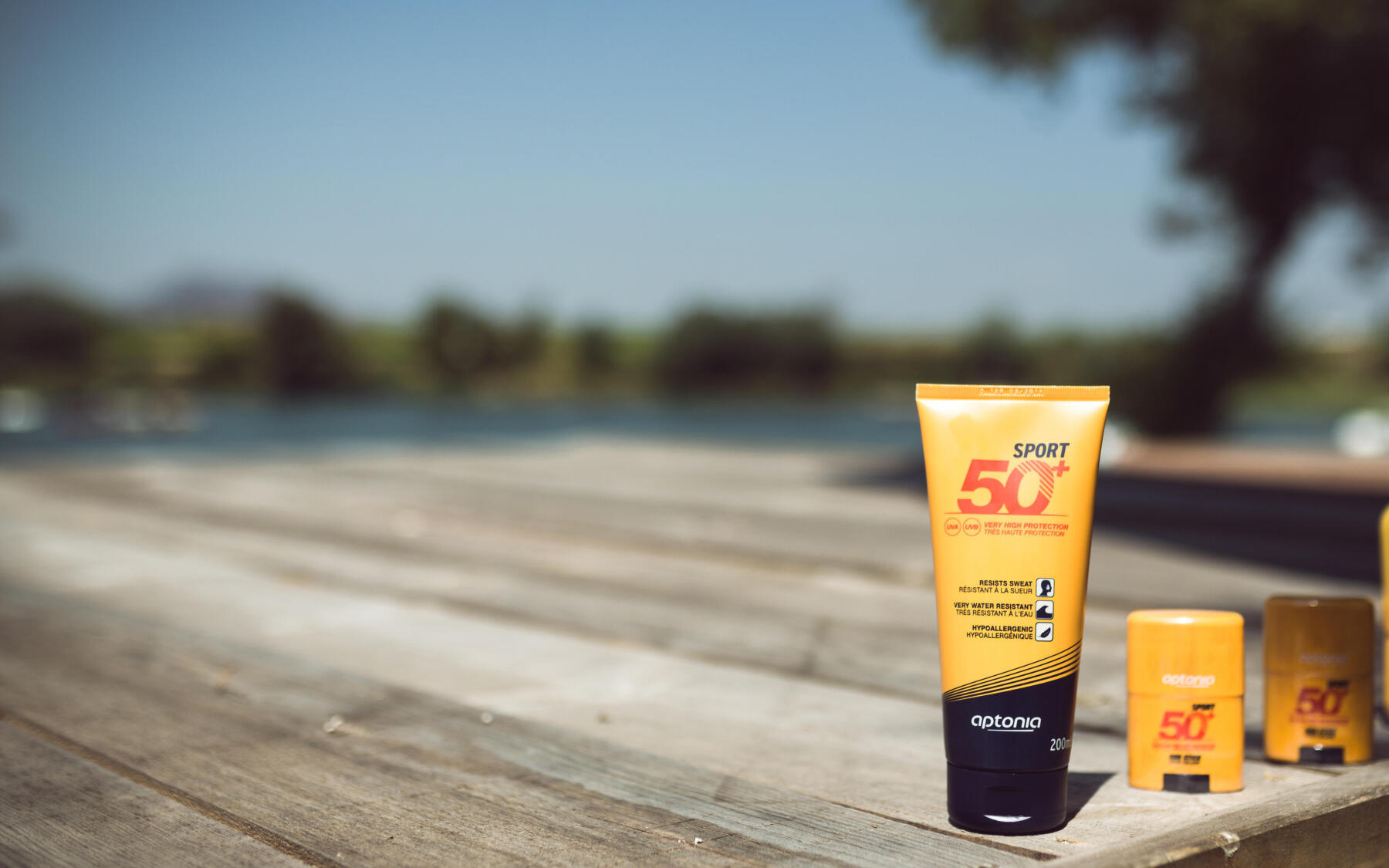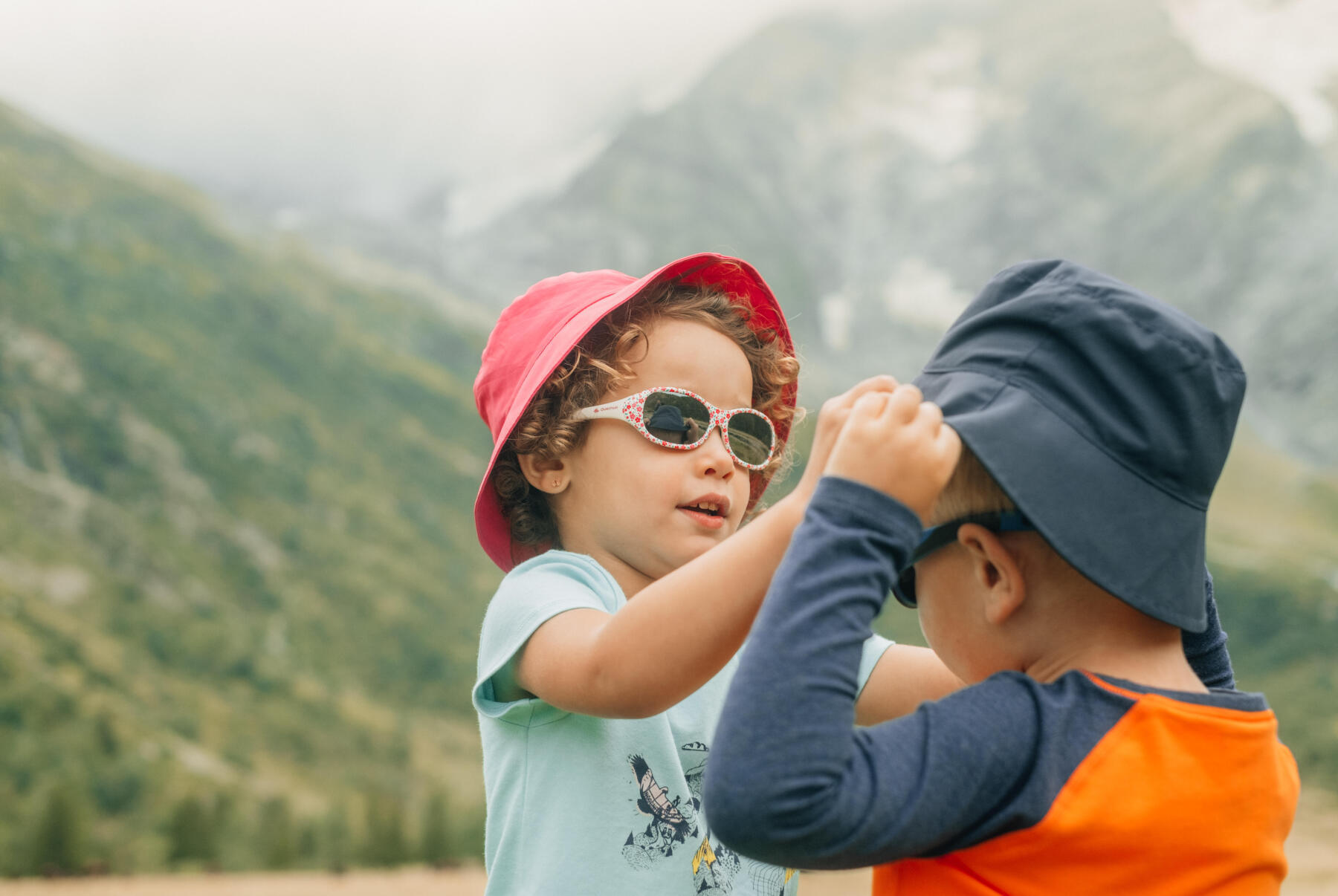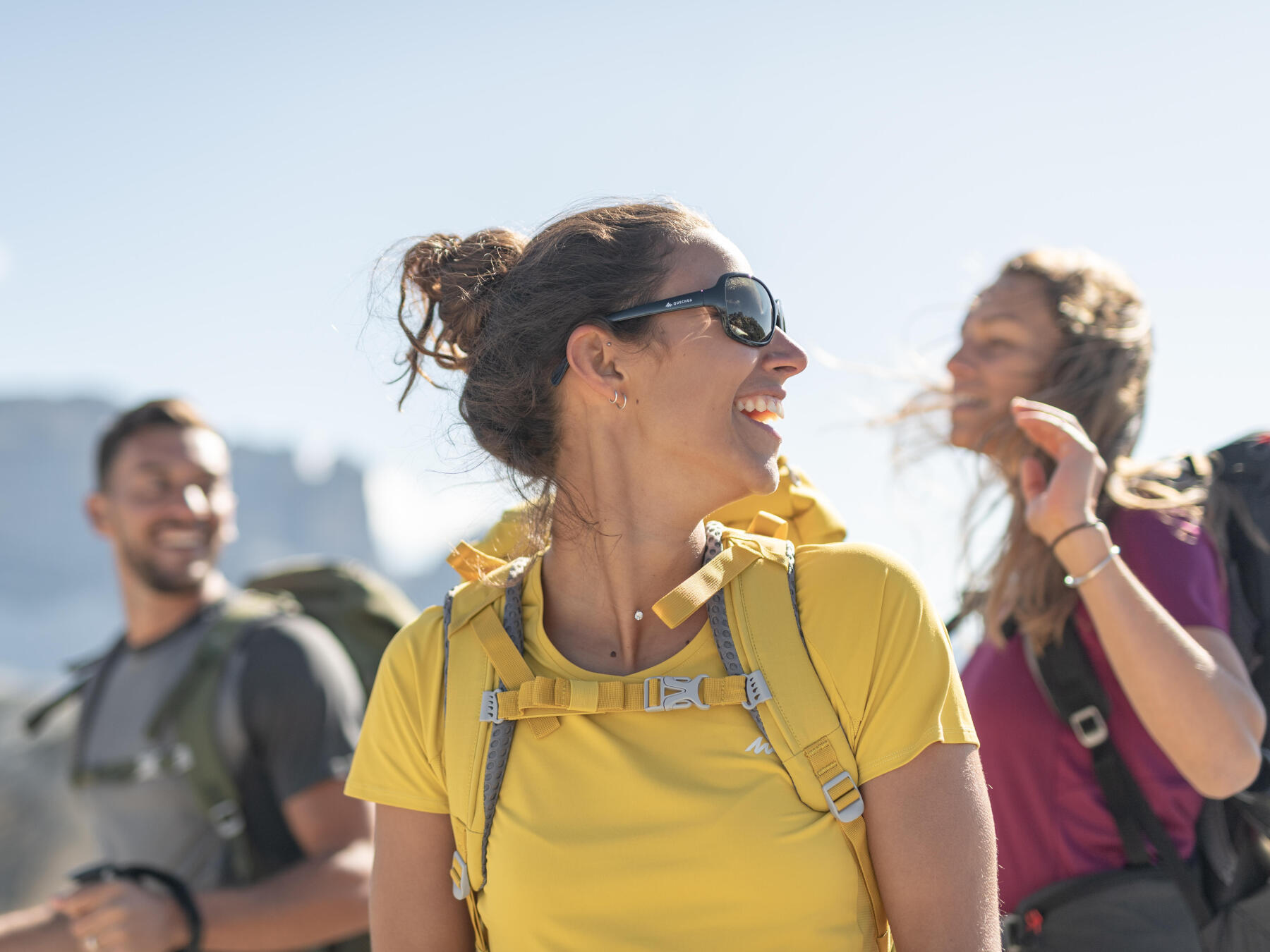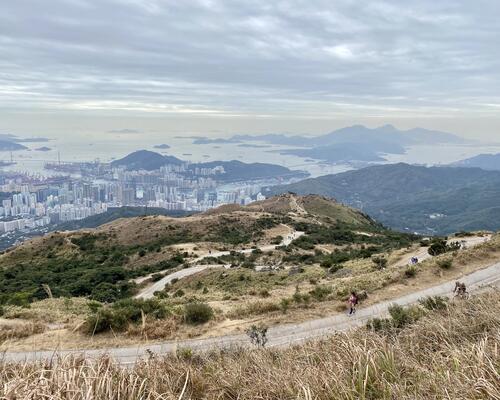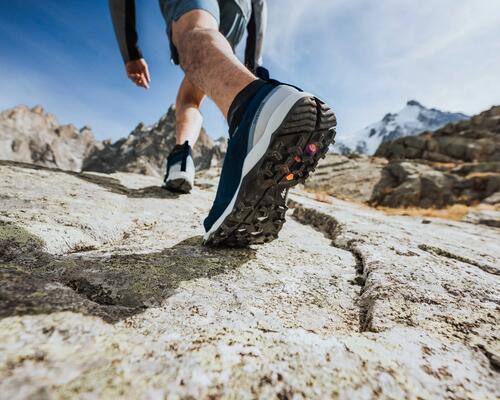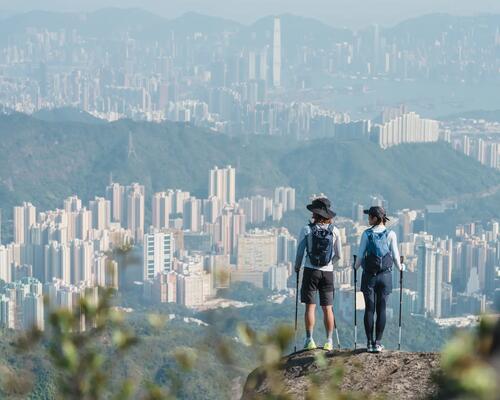Sun protection tips for hiking #1: the best protection is clothing, but not all textiles are equally effective!
Speaking of sun protection tips for hiking, never forget clothing is the best sun protection equipment. Pants, shirts and T-shirts make it easy to protect the most exposed parts of the body without even thinking about it. But not all textiles are equally effective: a light cotton T-shirt will let some of the UV through, a tight weave will protect you better than a loose or stretch weave because, when the stitching stretches, it loses its protective power. A wet garment will also lose its effectiveness, while a loose garment will offer more protection. And finally, washing will increase cotton’s UPF*! (So it’s important to always wash your clothes before wearing them.)
In addition, the best practice to protect you from the sun while hiking, is to apply a layer of sunscreen to your skin. You should ideally wear fabrics certified anti-UV which guarantee optimal protection: long-sleeved shirt (men), tank top (women) or windproof, for example. The UPF* 40+/50+ label guarantees it meets the European standard:
- A UPF* 40+ index means that 97.5% of rays are blocked
- 50+ that more than 98% of rays are blocked.
*UPF = Ultraviolet Protection Factor. This measurement indicates how much UV radiation is absorbed by a material.

